C2.4 - Kingdom Protista and Eukaryotes
Background
- protist: eukaryote that isn’t a plant, animal, or fungi
- Appear early in fossil record
- All eukaryotes
- Most microscopic and unicellular
- Three main groups
- Plant-like protists
- Animal-like protists
- Fungi-like protists
- Kingdom of convenience
- Can’t group them? Put them in protist kingdom
Structure and Function
- protists have diverse structures and functions
- found in many habitats including oceans, soil, snow, and even air
- most are unicellular and free-living
- some are colonial or multicellular like kelp
- multicellular protists have specialized cells
- protists have eukaryotic cell structures with nucleus and organelles
- eukaryotic structure is shared by all non-bacteria and non-archaea
- cell structure alone does not define protists
- traditional protist kingdom may be split into several kingdoms
- nucleic acid comparisons help identify evolutionary branches
- evidence of protist evolution is still incomplete
- term protist remains useful despite classification debates
- protists likely evolved from ancient prokaryotes
- plants, animals, and fungi evolved from protists
Origin of Eukaryotes
- “theory,” not proven
- eukaryotic cells evolved from combination of
- infolding
- serial endosymbiosis
- Infolding
- plasma membrane fold inwards
- formed
- endoplasmic reticulum (ER)
- Golgi apparatus
- nuclear envelope
- serial endosymbiosis
- prokaryotes engulfed by host cell
- prokaryotes are not digested
- over time, they evolve and form symbiotic relationship w/ host cell
- perform cell’s metabolic tasks
Origins of eukaryotes
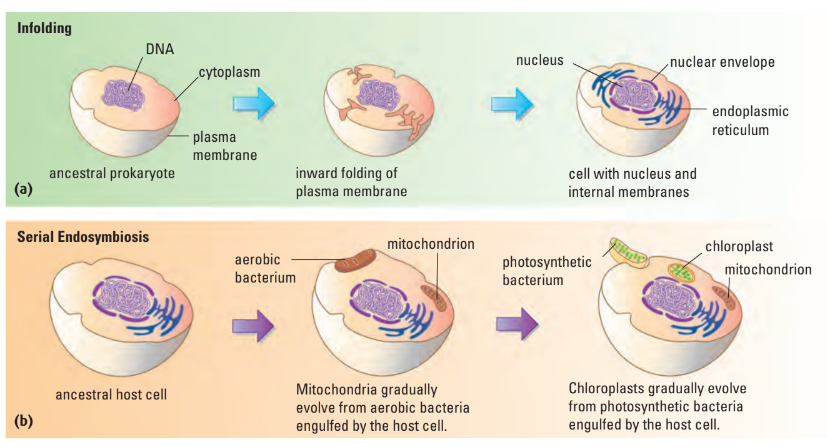
Motility
- pseudopodia: streaming cytoplasm into cellular extensions
- i.e. amoebas
- pseudopods (false feet)
- flagella: long hair-like projections extending out of cell membrane
- cilia: shorter hair-like projections that cover entire cell membrane or large clusters
- zooflagellates: heterotrophic protists w/ flagella
- ciliates: protists w/ cilia
- spores: reproductive cells released by organisms
- often found in protists relying on passive modes of transportation
Analogy of flagella vs. cilia
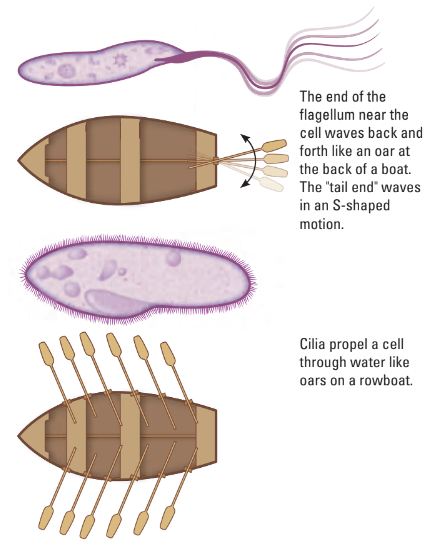
Plant-like Protists
- algae: plant-like protists
- can undergo population explosions producing harmful algae blooms
- many unicellular, some live in colonies, others are multicellular
- Contain chlorophyll for photosynthesis
- “chloro” = Greek for green
- Mostly multicellular but w/o tissues
- Found in aquatic or damp environments
- Group consists of 4 divisions
Other Classifications (textbook)
- classified by differences in
- cell walls
- types of photosynthetic pigments
- structure
- types of storage carbohydrates
- sequences of nucleic acids
- dinoflagellates: unicellular protists w/ cell wall made of cellulose and 2 flagella
- plankton: communities of mostly microscopic organisms that drift / swim near surface of ponds, lakes, and oceans
Division Chlorophyta (Green “Plant”)
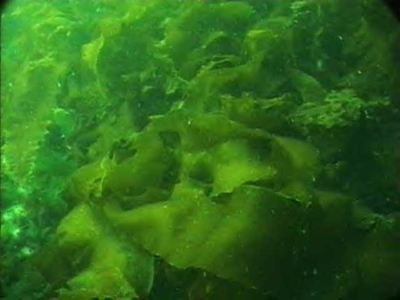
- Green algaes
- phytoplankton: unicellular photosynthetic green algae
- Primary producers in aquatic environments
- Supplies 67% of global oxygen supply
Division Phaeophyta
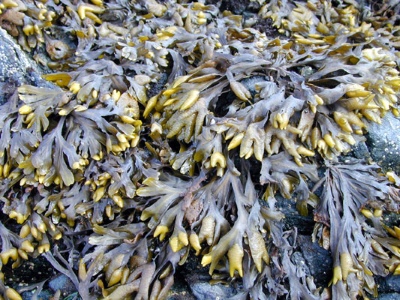
- Brown algaes
- Sea weeds
- Most crude oil derived from brown algae that lived mil. of yrs. ago
Division Rhodophyta
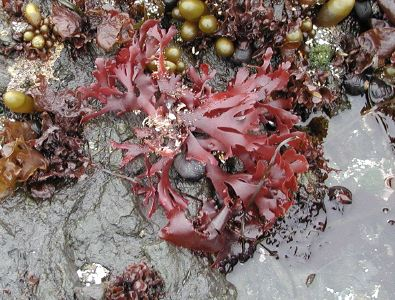
- Red algaes
- Sea weeds
- Sources of agar used in:
- drug capsules
- gels
- cosmetics
- ice cream
- toothpaste
- Eaten as nori and dulce
Division Chrysophyta
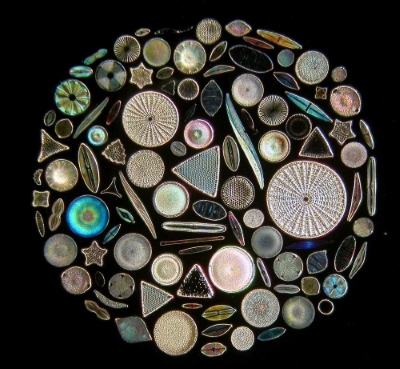
- Golden algae and diatoms
- Diatoms produce silica (sand) shells
- Diatom sediment called diatomaceous earth used as abrasive and insecticide
- To an insect, breathing in diatoms is like breathing in razor blades
Animal-like Protists
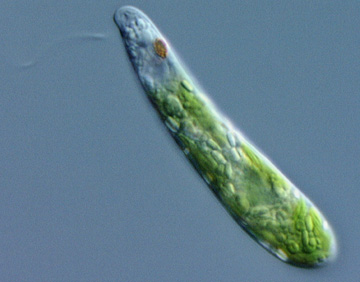
Euglena
Legend: flagellum: invisible tail, light detector: brown dot, green: chlorophyll
Many scientists incl. Euglena w/ plant-like protists
- animal-like protists: heterotrophic protists that capture and ingest food
- All unicellular heterotrophs found in aquatic or moist environments
- 3 main phyla classified by locomotion or parasitism
Phylum Sarcomastigophora
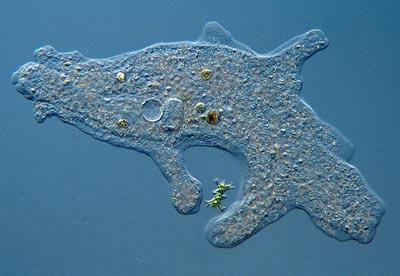
Amoeba
- Subphylum Sarcodina (the amoebas)
- use pseudopods (false feet) to encircle and engulf prey
- creates vacuole around prey, replaces water w/ digestive enzymes
- Subphylum Mastigophora (the flagellated protozans)
- self-flagellate: to whip yourself
Amoeba Anatomy
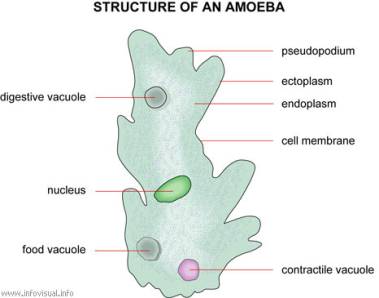
Phylum Ciliophora
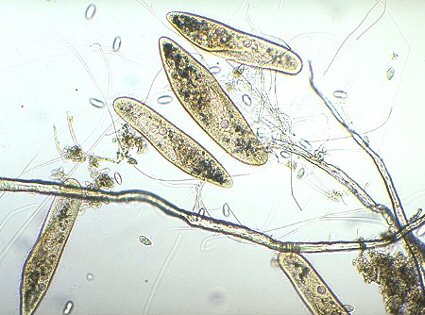
- The ciliates
- Move extremely fast by small hairs called cilia
- i.e. paramecia (sing. paramecium)
- cilia sweep food into oral groove
- food pushed into food vacuole and digested
- vacuole passes through organism to anal pore to release wastes
Paramecium Anatomy
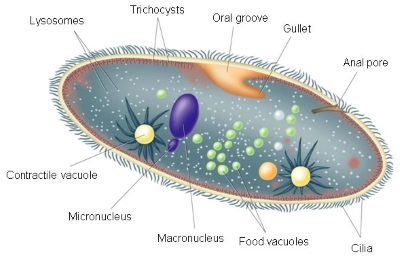
Ciliate Anatomy Explained
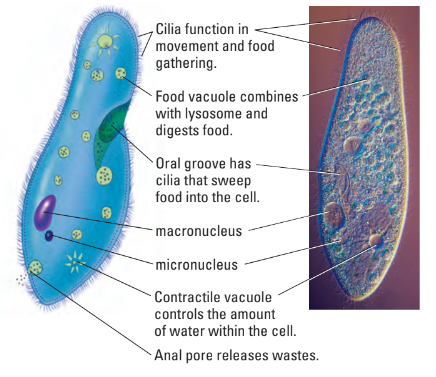
Phylum Apicomplexa
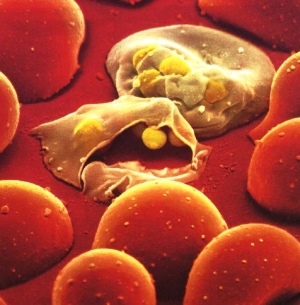
- Parasitic protozoans, like Plasmodium which causes malaria
- Malaria kills ~800,000 people a year
- Affects mostly poor, developing nations
- Quinine: class drug for malaria
- Tonic water (had quinine) also used to treat / prevent malaria
- Malaria used to be prominent in S. USA
Malaria Lifecycle
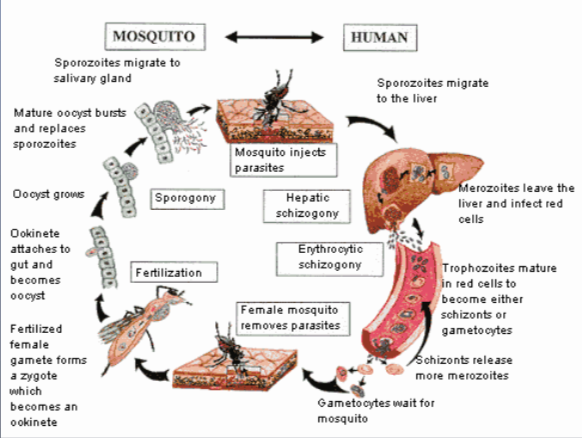
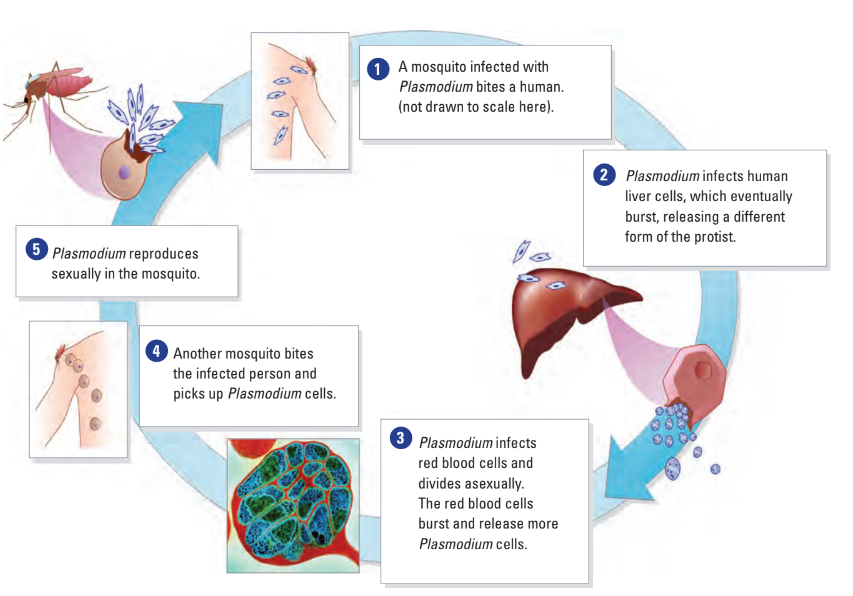
Malarial Zones
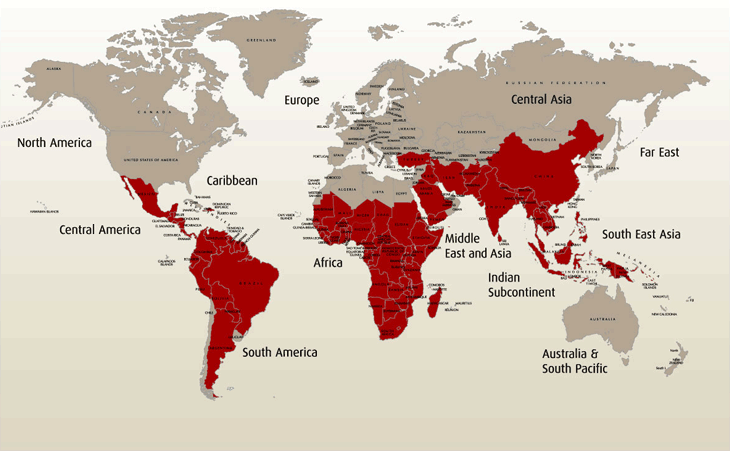
Fungi-like Protists
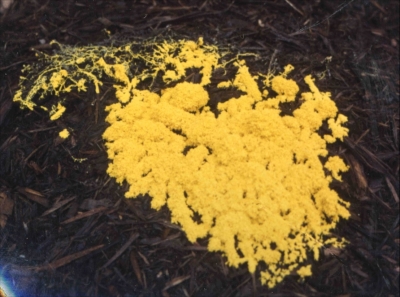
- fungi-like protists: heterotrophic protists that feed mostly on decaying organic matter
- Main division Myxomycota
- plasmodial slime moulds: large, branching fungus-like protist
- cellular slime moulds: decomposers that live mainly on decaying organic matter
- water moulds: decompose dead plants and matter in freshwater habitats
- plasmodium: single mass of cytoplasm undivided by cell membranes or cell walls that contains many nuclei
- Exist as thin streaming masses
- Live in moist environments like rotting logs
- Consume bacteria, yeast, fungi, decaying plant and animal matter
- Many nuclei
- Capable of sexual reproduction
Reproduction
- Various strategies
- Amoebas, paramecia, and most ciliates
- make copy of genetic material and divide into 2 genetically identical cells
- lack genetic diversity
- Paramecia
- exchange genetic material via conjugation
- creates genetic diversity
Climate Change
- carbon dioxide in water forms carbonic acid
- lowers pH of aquatic environments
- most organisms have an optimum pH range
- large organisms tolerate pH changes better than small ones
- phytoplankton are sensitive to pH changes
- phytoplankton form the base of aquatic food chains
- their decline could collapse ocean food webs